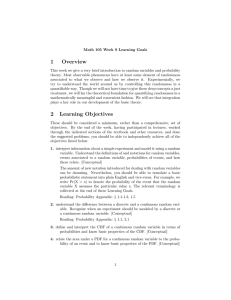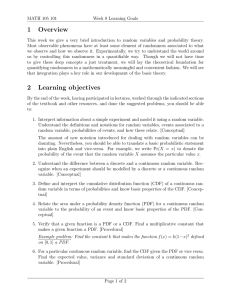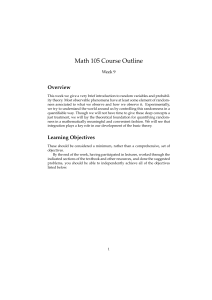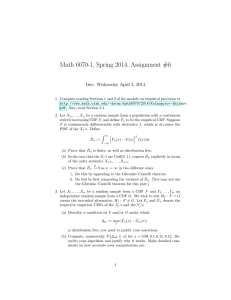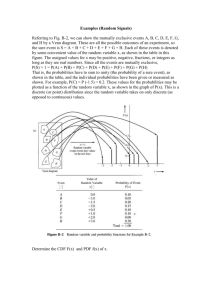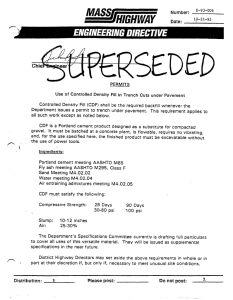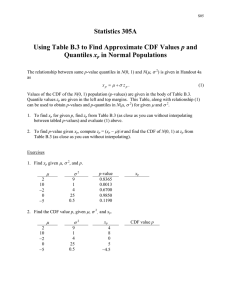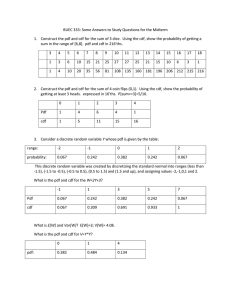1 Overview
advertisement
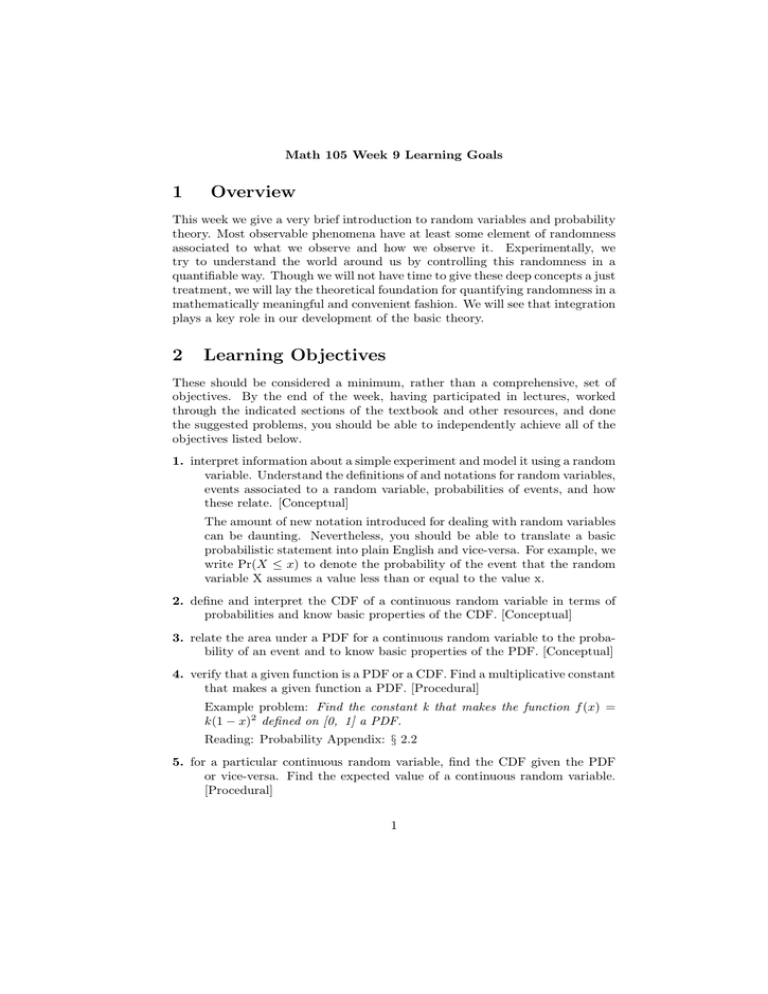
Math 105 Week 9 Learning Goals 1 Overview This week we give a very brief introduction to random variables and probability theory. Most observable phenomena have at least some element of randomness associated to what we observe and how we observe it. Experimentally, we try to understand the world around us by controlling this randomness in a quantifiable way. Though we will not have time to give these deep concepts a just treatment, we will lay the theoretical foundation for quantifying randomness in a mathematically meaningful and convenient fashion. We will see that integration plays a key role in our development of the basic theory. 2 Learning Objectives These should be considered a minimum, rather than a comprehensive, set of objectives. By the end of the week, having participated in lectures, worked through the indicated sections of the textbook and other resources, and done the suggested problems, you should be able to independently achieve all of the objectives listed below. 1. interpret information about a simple experiment and model it using a random variable. Understand the definitions of and notations for random variables, events associated to a random variable, probabilities of events, and how these relate. [Conceptual] The amount of new notation introduced for dealing with random variables can be daunting. Nevertheless, you should be able to translate a basic probabilistic statement into plain English and vice-versa. For example, we write Pr(X ≤ x) to denote the probability of the event that the random variable X assumes a value less than or equal to the value x. 2. define and interpret the CDF of a continuous random variable in terms of probabilities and know basic properties of the CDF. [Conceptual] 3. relate the area under a PDF for a continuous random variable to the probability of an event and to know basic properties of the PDF. [Conceptual] 4. verify that a given function is a PDF or a CDF. Find a multiplicative constant that makes a given function a PDF. [Procedural] Example problem: Find the constant k that makes the function f (x) = k(1 − x)2 defined on [0, 1] a PDF. Reading: Probability Appendix: § 2.2 5. for a particular continuous random variable, find the CDF given the PDF or vice-versa. Find the expected value of a continuous random variable. [Procedural] 1 Reading: Probability Appendix: § 2.6, 2.6 Note that we will not cover the normal distribution. 2
